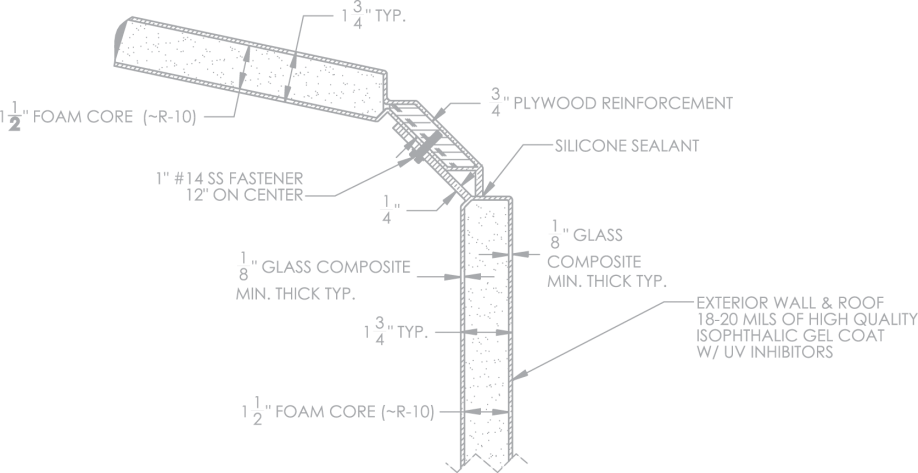Just How Composites are Altering the Landscape of Building Materials
Just How Composites are Altering the Landscape of Building Materials
Blog Article
Opening the Ecological Benefits of Recycled Composites in Construction and Style
In the realm of construction and layout, the application of recycled compounds holds considerable guarantee for improving sustainability techniques and decreasing environmental effect (composites). By integrating these innovative products, there is a possible to resolve critical issues such as waste reduction, power preservation, and a decline in carbon footprint. The change in the direction of a more lasting future in these sectors rests on unlocking the complete capacity of recycled compounds. This conversation will certainly explore the complex advantages and challenges connected with integrating recycled compounds into construction and style, supplying a look into the transformative possibilities that exist in advance.

Ecological Influence Decrease
The decrease of ecological impact through using recycled compounds in building and construction and layout plays a critical duty in lasting techniques. By incorporating recycled compounds into building products, the construction sector can considerably reduce its carbon footprint and add to an extra green future. These sustainable materials, made from repurposed plastics, timber fibers, or various other recycled components, offer a viable choice to standard construction products without jeopardizing on quality or resilience.
Recycled composites assist divert waste from land fills and decrease the demand for drawing out resources, therefore saving natural deposits. Furthermore, the production process of these compounds typically eats less power and emits fewer greenhouse gases contrasted to creating virgin products (composites). This shift in the direction of using recycled composites not only minimizes environmental harm however also promotes a round economic climate by urging the reuse of materials that would certainly otherwise be disposed of
Waste Reduction
With a focus on lessening waste in construction and style, the assimilation of recycled compounds offers a sustainable remedy to reduce environmental influence. Waste minimization is a vital facet of sustainable practices, and the usage of recycled compounds presents a chance to accomplish this objective effectively. By making use of products that have already served their preliminary objective, such as recycled plastics or recovered timber fibers, the construction and design sectors can significantly lower the quantity of waste created and sent to land fills.
Recycled compounds have the prospective to draw away considerable amounts of waste from standard disposal approaches, contributing to a more round economic situation where sources are utilized effectively. Furthermore, the production procedure of recycled composites typically eats less power and generates fewer exhausts contrasted to virgin products, further reducing the environmental footprint of building and design jobs.
Applying waste minimization approaches through the unification of recycled composites not just assists in conserving natural resources but additionally advertises a more lasting technique to building and designing for a greener future.
Power Preservation
Incorporating recycled composites not only minimizes waste in building and construction and design however likewise plays a crucial function in enhancing energy preservation practices within the market. look at here The usage of recycled composites in building can significantly add to energy conservation through various means. By advertising the usage of recycled compounds in building and construction and style, the sector can make considerable strides in the direction of accomplishing energy efficiency and lowering its carbon impact, inevitably contributing to a much more lasting constructed atmosphere.
Carbon Footprint Reduction
Enhancing sustainability practices with the utilization of recycled composites in building and style dramatically lowers the carbon impact of the market. By including recycled products into the production of compounds, the demand for virgin sources reduces, resulting in reduced power intake and greenhouse gas discharges related to conventional manufacturing processes. This decrease in carbon footprint is vital in combating environment adjustment and promoting a much more eco-friendly technique to building and construction and design.
The carbon footprint decrease accomplished through the fostering of recycled compounds aligns with the international press towards lasting practices and the decrease of commercial exhausts. Eventually, by focusing on the combination of recycled composites, the market can make significant strides in decreasing its carbon footprint and adding to a more sustainable future.
Lasting Future
The assimilation of recycled composites in building and design not just addresses prompt environmental issues however also lays a solid structure for a lasting future in the industry. By including recycled composites right into building materials and items, the building and construction and layout sectors can significantly minimize their reliance on virgin resources, resulting in a much more round economic situation. This change towards sustainability is important for alleviating the ecological effect of typical building and construction techniques, which typically result in high levels of waste generation and resource deficiency.

Conclusion
Finally, recycled compounds offer considerable ecological advantages in building and layout by decreasing environmental impact, decreasing waste, conserving power, decreasing carbon footprint, and promoting a sustainable future. Accepting using recycled composites can add to a more environmentally-friendly approach to building and design, eventually resulting in a much more sustainable and greener future for all.
The decrease of environmental impact with the usage of recycled compounds in building and construction and design plays an important function in sustainable techniques.With a focus on reducing waste in building and layout, the integration of recycled composites provides a sustainable solution to lower ecological effect. By promoting the use of recycled composites in building and layout, the sector can make significant strides in the direction of attaining power performance and reducing its carbon impact, eventually contributing to a much more lasting developed environment.

Report this page